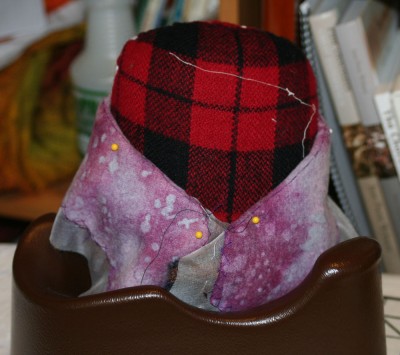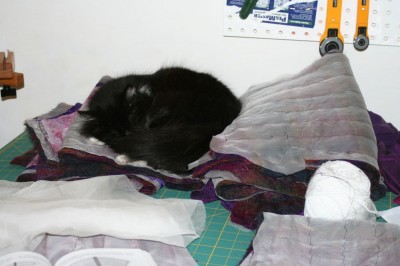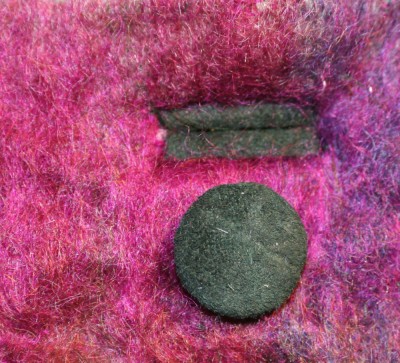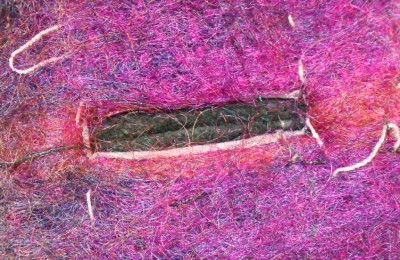I am working on the collar now, and have painstakingly catch-stitched the interfacing down to the undercollar. I have basted the roll line, and steamed it:

I have also finished padstitching both front lapels (and finished off the fronts generally), but since someone discovered them before I could get out the camera, this is the only photo I can offer:
This weekend Mike and I are driving down to the Antelope Valley Poppy Reserve to see the poppies and other wildflowers. In a good year, the Poppy Reserve is literally paved in wildflowers, and truly is the sight you see in all those photos of fields of poppies and lupines. I’ve been to see it once before, and always wanted to go back, but as the Poppy Reserve typically blooms at the height of cycling training season, I’ve not been able to go. This year, since I am (unusually) taking a year off, I can go. (It looks like we missed the peak of poppy season, but it should be fun regardless.)
We’re also visiting an old friend of mine – in fact, my oldest friend. In middle school we were inseparable best buddies, but we went to different high schools, fell out of touch, and, well, you know how that goes. A few years after we graduated college, he dropped me a line asking if I were “the same Tien-Yee Chiu who went to Wilde Lake Middle School”, and we corresponded for awhile. Then I went off to Southeast Asia, and came back to discover his email address disconnected and no trace of where he’d gone. I tried looking him up, but do you have any idea how many Rob Callahans there are in the U.S.? I finally gave up.
Fast forward seven years. I got an email from him, again out of the blue. Hopefully we won’t lose track of each other again; we’re connected on Facebook and I have a permanent email address for him now, so that should help.
Anyway, we’re going to stay with him, and I look forward to catching up on the last seven years.
I’m taking the collar along with me, I’m planning to padstitch it if I have free time. Unfortunately I can’t do that during the 6-hour drive to/from LA, unless I want to prick myself! Instead I am bringing an off-the-loom but unfinished shawl, and will probably twist the fringe on the way down and back. Or I might just relax. (I’ve been known to do that on occasion.)



